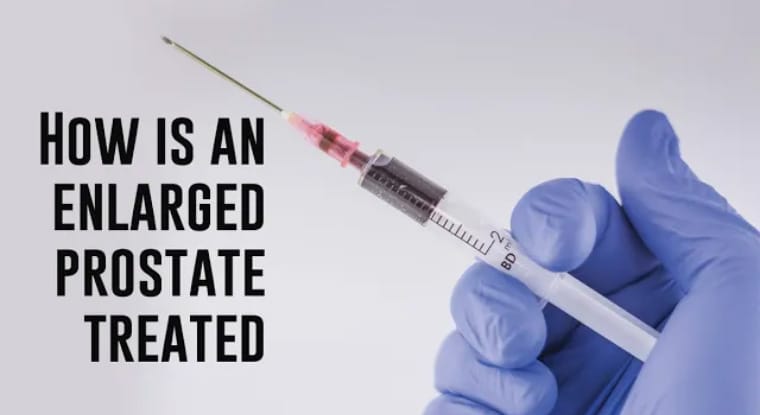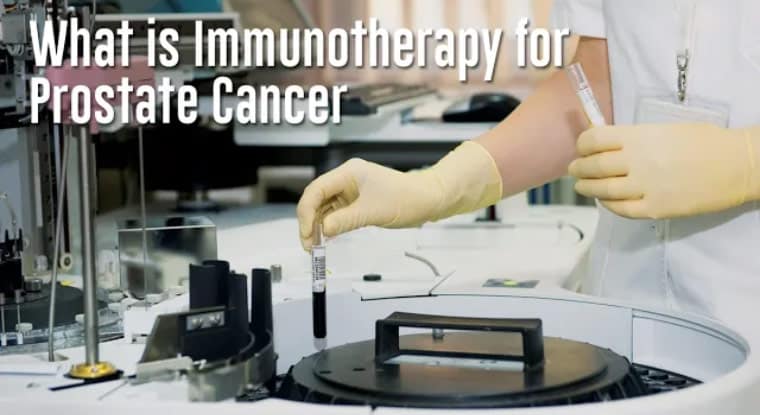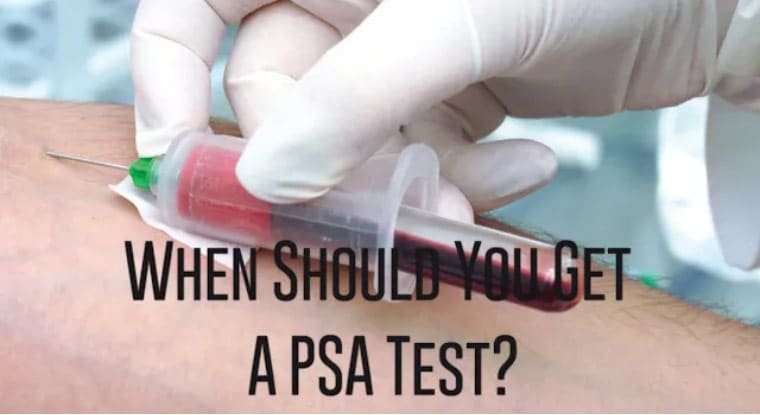KEY TAKEAWAYS:
- Prostate cancer recurrence can occur due to cancer cells left behind during treatment or because the cancer was initially diagnosed as less advanced than it actually was.
- A rise in Prostate Specific Antigen (PSA) levels and the use of PET/CT imaging scans are effective ways to diagnose recurrent prostate cancer.
- Treatment options for recurring prostate cancer depend on the initial treatment and may include radiation therapy, surgical removal of the prostate, cryotherapy, or hormone therapy.
Cancer of the prostate affects a small gland that is situated just in front of the rectum and around the base of the urethra in men. It is the most common type of cancer in men, with those over age 50 facing the greatest risk. The good news is that prostate cancer is treatable. Treatment options include surgical removal of the prostate gland, radiation therapy, hormone therapy and chemotherapy. A combination of various treatment methods may be applied for full effect. Sometimes, however, even after treatment has been administered successfully, the prostate cancer returns. This is called a recurrence and it occurs with other types of cancer too.
Causes of Prostate Cancer Recurrence
Prostate cancer can recur for two main reasons.
1. A small clump of cancer cells left behind during the earlier course of treatment can grow into a larger number.
2. The cancer initially was diagnosed as being less advanced than it actually was. For instance, a patient might be diagnosed with cancer that is limited only to the prostate while in fact, the cancer might have advanced to the surrounding lymph nodes.
Diagnosis of Recurrent Prostate Cancer
 A major indicator of recurring prostate cancer is a rise in Prostate Specific Antigen (PSA) levels. PSA is a protein produced by the prostate. A PSA test is always conducted as part of the preliminary work in the diagnosis of prostate cancer, whether initial or recurrent. Ideally, after successful treatment, PSA levels should go down and should stay consistently low. If the level starts to rise again, that is a red light that should be followed up with further testing.
A major indicator of recurring prostate cancer is a rise in Prostate Specific Antigen (PSA) levels. PSA is a protein produced by the prostate. A PSA test is always conducted as part of the preliminary work in the diagnosis of prostate cancer, whether initial or recurrent. Ideally, after successful treatment, PSA levels should go down and should stay consistently low. If the level starts to rise again, that is a red light that should be followed up with further testing.
Another test, which doctors agree is very effective in checking for recurrent prostate cancer, is the PET/CT imaging scan. Dr. Jonathan Jay, who has an office in Naples, FL, says the scan is effective because it has the ability to localize the cancer and map out its extent with great accuracy. Treatment of cancer usually depends on being able to tell exactly what part is affected. If this can be done, then it becomes easy to direct treatment at that specific area, which is what a PET/CT imaging scan does.
Treatment of Recurring Prostate Cancer
The form of treatment depends on what was initially administered. The following options are available:
1. If the prostate was surgically removed the first time, radiation therapy may be administered to treat the recurrent cancer;
2. If radiation therapy was administered the first time, a surgical removal of the prostate may be recommended. That decision depends on whether or not the cancer has spread outside of the prostate.
3. Cryotherapy. This treatment involves freezing the cancer cells to kill them.
4. Hormone Therapy. This may be used in combination with other methods. It is also used as a last option when the cancer has spread very far.
The management of recurrent prostate cancer depends on finding the cancer, which most likely would be detected in a post treatment screening. Men who have undergone successful prostate cancer treatment should attend regular screenings after the treatment is finished. Followup screening and checkups are important, and it is important to seek out a comfortable, patient centered treatment center, such as the Advanced Urology Institute. The staff at Advanced Urology Institute is very experienced in working with patients and helping with questions, diagnosis and treatment. They have the knowledge and technology to work with the patient through every step of the process. For more information, visit the Advanced Urology Institute website/
TRANSCRIPTION:
Prostate cancer is one of the most common types of cancer in men, affecting about one in nine. While prostate cancer can be cured in some men, approximately one in three men will experience what is known as recurrent prostate cancer, which is prostate cancer that has come back after initial treatment. Now unfortunately, prostate cancer is the second leading cause of cancer death in men; about one in 41 will die from prostate cancer this year, and that’s according to the American Cancer Society.
The good news is that there are newer imaging techniques that can help locate recurrent prostate cancer. Being able to locate the disease in the body can really help doctors personalize care for patients living with recurrent prostate cancer. Here to help us understand more about this is Dr. Jonathan Jay and his patient Peter Irving. Welcome to both of you.
Thank you. Doctor, let me start with you. This is Men’s Health Month, so let’s start with prostate cancer and what it is.
Well, we’ll take a step back and start with what the prostate is because most people don’t understand what the prostate is. The prostate is a male reproductive organ, and one-third of the fluid that a man sees in his ejaculation comes from the prostate. The purpose of this fluid is to nourish and protect sperm until conception.
It’s treatable?
Yes, prostate cancer is treatable. Prostate cancer in its treatable stages is asymptomatic, so it’s very important for men to understand that they need to have an evaluation on a yearly basis starting at age 50, which would entail a rectal examination and a blood test called PSA.
Alright, so let’s bring in Peter. When were you diagnosed? What happened?
In 2008, I was diagnosed with cancer following a needle biopsy in which 12 out of 13 were positive. So you were doing a routine exam, Peter?
Just routine, and the PSA started to spike over a period of months. From what to what?
My normal was 1.5, let’s say, and this kept creeping up, and I think my general practitioner sent me to a urologist when it got to like four or five. But at that time, they still did not believe I had prostate cancer; things just weren’t what they thought they should be. That’s why I went to the urologist, and then I had the needle biopsy.
Which confirmed it?
Which confirmed it, and then I went and had surgery, had it removed, and followed with the same urologist. To be checked?
Yeah.
Alright, doctor, let me bring you in. If you could define PSA for us, please, and inform us of the levels that happened.
PSA stands for prostate-specific antigen; it’s a protein that’s excreted solely by the prostate, so it’s a great way of monitoring whether a patient has prostate cancer, develops prostate cancer, or has a reoccurrence of prostate cancer. The significance of PSA is what the PSA is in an individual. In Peter’s case, his PSA was one and increasing over time; that was indicative that something was changing and something was wrong.
Understood. So, Peter, you have the surgery, you’re living your life, and then you have recurrent prostate cancer?
Well, my PSA started to spike again, you know, in theory, you shouldn’t have any PSA.
Exactly. And I believe it was somewhere again in the ones, and then it kept rebounding and going up and up, and we watched it for four years. In 2016, they decided to do radiation therapy and hormone therapy together, and they concentrated on the spot they found through the new imaging, and today I’m zero.
That’s fantastic. Doctor, since he mentioned the new imaging, it’s a PET CT imaging test. Tell me, what is different about this test as opposed to what is always used, I guess, in a bone scan and CT, right?
Yes. So, what are the differences between what was used then and what he used?
We had to define the location and extent of this disease, so conventionally, how do we do that? CT scan is a test that has the ability to survey the body without making an incision; we can survey the body for soft tissue changes, we can detect enlarged lymph nodes, we can detect masses within the abdominal cavity. Bone scan surveys the bone for reoccurring disease. Now, think of this: with these conventional tests, you have to have a mass—a mass would be hundreds of thousands or millions of cells in one place—to be detected by these conventional studies. This newer CT PET scan has the ability to define the location and extent of prostate cancer, reoccurring prostate cancer, at an earlier stage and at a lower PSA.
And how does that make a difference then for the treatment?
It’s very important because we want to treat the disease; we need to define the extent and location of the disease, as that dictates our treatment options. So, as opposed to, let’s say, affecting other organs in the body, you’re minimizing the effects?
Absolutely. In Peter’s case, we were able to do a CT PET scan, localize reoccurrence to one area within the pelvis, and we were able to treat that, but we treated that with radiation or hormonal therapy. We were able to treat that without affecting any of the other organs around it.
Peter, you’re doing fine now, right? Everything is controlled?
A negative PSA test for two-plus years.
So, for our viewers out there, and we have lots of males, what would you say, what would be your final thoughts, your words of wisdom?
Just have a routine, probably at the age of 45.
45, 50, yes. Start getting your PSAs on a yearly basis, and it’ll make you feel much better. Absolutely. So not worrying about that.
Doctor, any final takeaways?
One of the important things is that prostate cancer is prevalent in our community, yes, but if found early, it’s a treatable medical condition, and all you have to do is a simple rectal examination and a blood test called PSA with your primary care physician. If something were to happen again in the future, would you suggest again this new imaging test to him?
Absolutely. If we saw increasing PSAs, the first thing that I would do is this new CT PET scan.
Alright, thank you so much, gentlemen, both of you for your time. Thank you, and I’m glad you’re doing fantastic.
REFERENCES:
- “When cancer returns: How to cope with cancer recurrence.” https://www.mayoclinic.org/diseases-conditions/cancer/in-depth/cancer/art-20044575.
- “Treating Prostate Cancer That Doesn’t Go Away or Comes Back ….” https://www.cancer.org/cancer/prostate-cancer/treating/recurrence.html.
- “Prostate cancer – Symptoms and causes – Mayo Clinic.” 14 Dec. 2022, https://www.mayoclinic.org/diseases-conditions/prostate-cancer/symptoms-causes/syc-20353087.







 A urologist can prescribe medication to reduce the symptoms of an enlarged prostate and also to control the enlargement. The available medications include:
A urologist can prescribe medication to reduce the symptoms of an enlarged prostate and also to control the enlargement. The available medications include:







